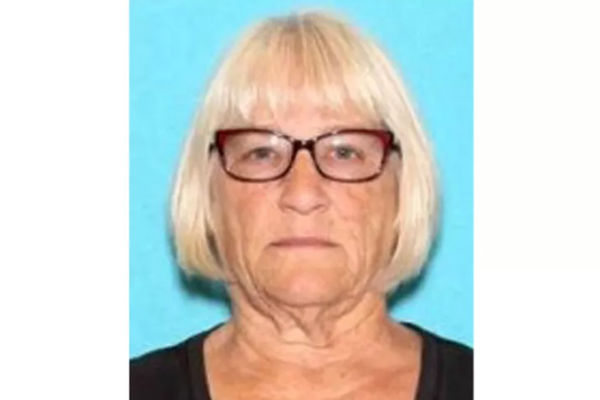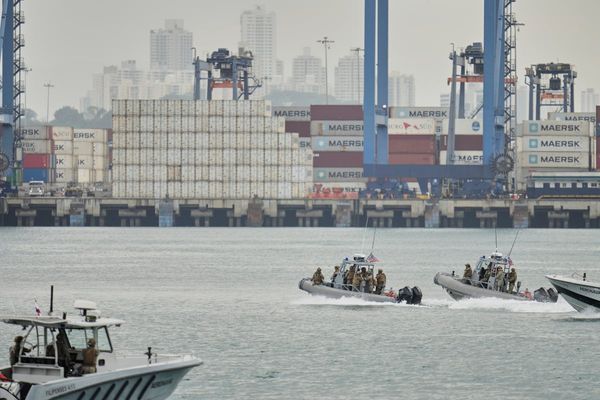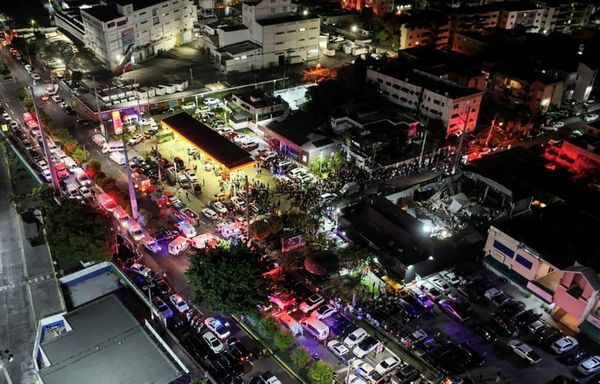DULUTH, Minn. — Bear hunting in Minnesota is bucking a long-term trend by drawing more participants over the past decade even as other forms of hunting have declined in popularity.
Last year, 24,698 people applied for a quota-area bear hunting license in Minnesota, up 11% over 22,279 applicants in 2020 and up a whopping 57% since 2009.
Overall, including the unlimited, or "no quota," bear range in the state, 8,990 bear hunting licenses were sold in 2021, up nearly 37% from 6,589 in 2013. Over that same time, Minnesota deer hunting license sales fell by about 12%.
And bear hunting in Minnesota draws more nonresidents than most other hunting seasons, ranging from 13%-24% from year to year.
"The word is out that Minnesota is a great state for bear hunting," said Andy Tri, who heads the Minnesota Department of Natural Resources bear program.
The increase in bear hunting interest comes as the state's bear population has slowly increased as well, from an estimated modern low point of 12,995 in 2013 to 15,247 in 2021.
And the bear harvest each fall has been trending up as well, nearly doubling from a recent low point of 1,627 in 2014, to 3,203 in 2020, and 2,971 in 2021.
There are now 62 licensed bear hunting guides across northern Minnesota.
The recent high numbers for both bears and bear hunters still remain below the historic high levels from the turn of the century when, in 2000, Minnesota had an estimated 18,268 bears and the DNR was trying to bring the population down, with bears expanding into farm field regions and causing trouble across their range. That year, a record 19,304 hunting licenses were sold and hunters bagged 3,898 bears, with nearly 5,000 killed in 2001.
The bear population then crashed due to the high hunter harvest. For the past decade, DNR wildlife biologists have been trying to support enough bears to make the public and hunters happy, but not too many bears that they become a widespread nuisance. The future is entirely in the public's hands, Tri notes, much like wolves, with bears able to grow their numbers to whatever point they are still welcome by humans.
"We do not have a specific population goal," Tri said. "The main goal for the bear population is to build resilience in the population, to allow it to withstand multiple food failures without requiring drastic changes to the hunting quotas. ... This means we are keeping quotas relatively conservative at a statewide level: first, to allow the bear population to slowly recover for a bear population more robust to years of high harvest when natural foods are poor; and, second, to allow people to see more bears on the landscape; and third, allow increased opportunity for hunters."
Minnesota has had a complicated relationship with its black bears, essentially declaring war on them for more than a century with a bounty that wasn't removed until 1965. They were considered vermin, a nuisance to be shot on sight at garbage dumps and elsewhere, all year long.
In 1971, the Minnesota Legislature declared bears protected as a big game animal, meaning they could only be shot during a specific and regulated hunting season by licensed hunters. Since then their numbers have been slowly growing, with ups and downs, as public acceptance and appreciation for the animals has increased dramatically.
Hunting is by far the largest cause of mortality among bears, that otherwise often live to age 10 or older when humans don't intervene. Hunting causes about 80% of all Minnesota bear mortality and all combined human causes — vehicle accidents and nuisance bears shot — total about 90%. Very few bears ever die of old age, Tri has noted.
Hunting success depends in large part on the ups and downs of wild food crops, with poor wild crop years leading to higher harvests. But as long as people are accepting and appreciating bears, Tria said, their numbers can expand.
"We want the recovery to be gradual to allow the public to get used to coexisting with bears by keeping (food sources) secured," Tria said. "We have really ramped up our education efforts with bears because bear coexistence can be accomplished by a few simple things that people can do at their homes and cabins."
Part of the draw that's increasing the number of people applying for Minnesota bear hunting permits is the unusually high success rate among hunters. The DNR in recent years has moved to reduce the number of available permits in quota areas, both to keep more bears in the woods and fewer hunters in the woods. That led to a 50% success rate for bear hunters in quota zones, among the highest anywhere in North America. If you can get a license.
While licenses are essentially unlimited in the state's No Quota zone, the southern portions of bear range in the state, it can take between three and five years of applying to land a license in the state's limited quota permit areas. Out of the 24,769 people who applied last year, only 3,575 were drawn for a permit.
"We're walking a fine line between providing enough permits to meet demand and keeping the bear population where we think it needs to be and offering hunters a quality hunt and maintaining a viable (bear) population," Tri said. "It's hard to make everyone happy. But we think we're in a pretty good spot in most permit areas. We think it's a better quality hunting experience with less competition."
The exceptions are the far-northern permit areas where bear populations continue to slowly drop, by about 1% annually, but as much as 20% in some permit areas over the past decade. (The recent increase in nuisance bear complaints in Minnesota's Arrowhead region, including around Duluth, was spurred by poor wild food crops in 2020 and 2021 and not more bears, Tri said.)
The decline in bears in those northern areas has led to a reduction in hunting permits. But more permits are being offered in areas to the south and west, where more agriculture and better bear food is available. Overall, there will be 30 more permits available in 2022 than 2021 for quota areas.
Rob Parrott, of Bear Down Guide Service near Duluth, said he believes the bear population is increasing rapidly south and west of Duluth. His hunters are mostly in the Floodwood area, in Permit Area 51, which he says has more bears now than any time in the 18 years he's been hunting there.
"They could have twice the number of tags available and still have a healthy bear population," Parrott said. "I know what they (DNR) are trying to do, keeping the success rate high and bringing up the bear population. But out our way, we have more bears now than ever. They're getting hit on the road. ... We even have them coming into the yard at bear camp. We never had that before."
Parrott said some of his clients have to wait four years or more between being drawn for a permit to hunt with him.
"That's not fair to an old guy, or a youngster looking forward to their first hunt. If they have to wait four years, they are gong to move on with their life and not hunt," Parrott said.
Bears also are increasing in number across much of the No Quota Area, to the south and west of what had been considered traditional northwoods bear habitat, as bears adjust, adapt and thrive in areas with agricultural crops. It turns out bears, like deer, thrive much more in areas with high-calorie food from farm fields.
Sow bears in areas of abundant corn crops on average have their first cubs at age 4, and sometimes at age 3. By contrast, bears in the deep northwoods might not have their first cubs until age 5 or 6, Tri noted, and those in Canada's far-north boreal forests might be 7 or 8 until they are healthy enough to become pregnant.
"A fat mom helps everything in life. She has more cubs and healthier cubs and they mature earlier and it just feeds on itself," Tri said. "It really helps how well mom is doing to give you a leg up in life."
The increase in bear populations in the No Quota Area has led to increasing interest among hunters, and last year more than half the hunters, and more than half the bears harvested, came out of the No Quota Area for the first time.
The No Quota Area is aimed at allowing higher bear harvest to avoid conflict with people, namely accidents on roads and crop damage in fields.
"We are seeing bears move into corn country more and more. And we're seeing corn now way up north in bear country. We've got more corn in Minnesota now than any time in history," Tri said. "That's good and bad for bears."
Wildlife experts say the future of bears in Minnesota and Wisconsin in large part depends on how well people can get along with them. Well-regulated hunting seasons can keep bear numbers from expanding, and even bring them down in some areas. But it's how well people adjust to having bears around that's critical.
The DNR urges people to take in all bird feeders when bears are out of their dens, from April through October. Keep all garbage cans inside a garage or shed until the morning of pickup. Don't feed pets outdoors. And fence off fruit trees and vegetable gardens. Bears that can't find food will move on.
People who have a problem with bears that won't go away can contact their local DNR wildlife office. But be warned: The DNR does very little relocating of bears anymore and bears that people don't want around will often be shot and killed.
How to apply:
dnr.state.mn.us/licenses/online-sales.html
888-665-4236 or in person or at license vendors statewide by May 6. Some 25,000 people are expected to apply for 3,605 permits in the quota areas. Successful applicants will be notified by June 1.
— Licenses go on sale June 1 and must be purchased by Aug. 1. Any unclaimed licenses go on sale Aug. 4.
— License cost: Resident age 18 and older, $45; nonresident age 18 and older, $231; ages 13-17 (resident or nonresident) $6.
— Licenses for the No Quota Area are unlimited and can be purchased "over the counter" at the same locations.
— Baiting begins Aug. 12 and the 2022 season runs Sept. 1-Oct. 16.
— Limit: One adult bear per licensed hunter per year.
For more info: dnr.state.mn.us/hunting/bear/index.html







